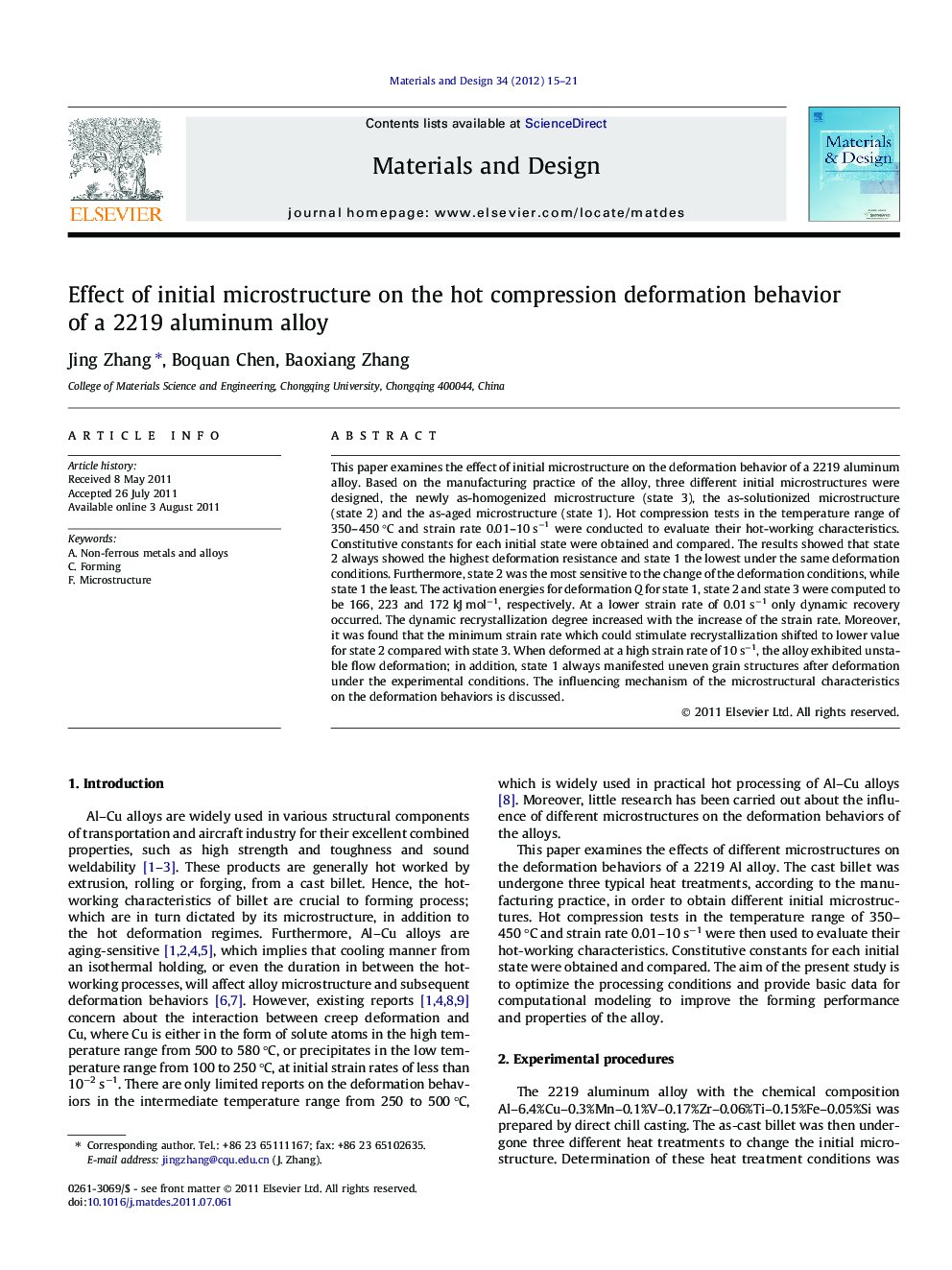| Article ID | Journal | Published Year | Pages | File Type |
|---|---|---|---|---|
| 831006 | Materials & Design (1980-2015) | 2012 | 7 Pages |
This paper examines the effect of initial microstructure on the deformation behavior of a 2219 aluminum alloy. Based on the manufacturing practice of the alloy, three different initial microstructures were designed, the newly as-homogenized microstructure (state 3), the as-solutionized microstructure (state 2) and the as-aged microstructure (state 1). Hot compression tests in the temperature range of 350–450 °C and strain rate 0.01–10 s−1 were conducted to evaluate their hot-working characteristics. Constitutive constants for each initial state were obtained and compared. The results showed that state 2 always showed the highest deformation resistance and state 1 the lowest under the same deformation conditions. Furthermore, state 2 was the most sensitive to the change of the deformation conditions, while state 1 the least. The activation energies for deformation Q for state 1, state 2 and state 3 were computed to be 166, 223 and 172 kJ mol−1, respectively. At a lower strain rate of 0.01 s−1 only dynamic recovery occurred. The dynamic recrystallization degree increased with the increase of the strain rate. Moreover, it was found that the minimum strain rate which could stimulate recrystallization shifted to lower value for state 2 compared with state 3. When deformed at a high strain rate of 10 s−1, the alloy exhibited unstable flow deformation; in addition, state 1 always manifested uneven grain structures after deformation under the experimental conditions. The influencing mechanism of the microstructural characteristics on the deformation behaviors is discussed.
► Different states imposed alloy markedly different deformation activation energy. ► Higher Si concentration in α-Al matrix increased work-hardening degree of the alloy. ► As-aged state was the least sensitive to the change of the deformation conditions. ► Storage period for a homogenized billet and duration in between forming process should be limited.
